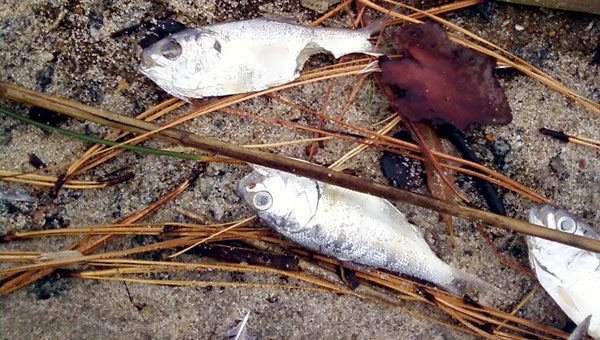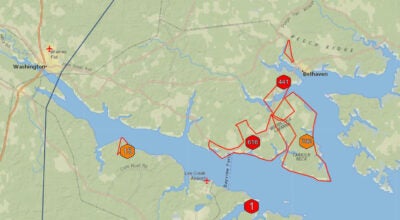Early fish kills may have roots in Florence flooding
Published 7:12 pm Monday, May 27, 2019
Slime mold is making an early appearance this year, as are the dead fish that fall prey to the infection.
The first reported fish kill of the season involved hundreds of dead juvenile menhaden were spotted on the Pungo River near Wrights Creek. The North Carolina Department of Environmental Quality determined the death of about 300 small fish was from bacterial infections: A. invadans, a slime mold that causes ulcerous lesions on vulnerable fish. Other fish kills were reported on the Neuse and in Blounts Bay. Some catfish were also found to be suffering from the infection.
“Right now, we’re seeing small numbers. We’re not talking thousands and thousands, but a high percentage of the menhaden, most of them have open sores,” said Heather Deck, They seem to become more susceptible to the slime mold when they’re distressed.”
That the first fish kills of the year have been recorded in May is cause for concern, according to Deck.
“For me, it’s concerning because it’s early. It’s really early to be having this,” Deck said.
A variety of sources contribute to the problem, some stemming Hurricane Florence in September 2018 and a very wet winter and spring. Flooding from Florence, along with more nutrients being washed into the river from heavy rains have led to algal blooms that create low-oxygen conditions in the water, which then leads to weakened immune systems and greater susceptibility to bacterial infections. While the temperatures in the 90s over the past two weeks has conditions perfect for river swimming for people, those same temperatures are contributing to the problem and could continue to do so as the summer months pass, according to Deck.
“It could be coming to a very interesting or not great summer. It also somewhat depends on climactic conditions,” Deck said.
Sound Rivers asks that all fish kills on the Pamlico and Pungo rivers and their tributaries be reported to the Pamlico-Tar Riverkeeper and those on the Neuse River and its tributaries reported to the Lower Neuse Riverkeeper. Both can be found on Facebook.





